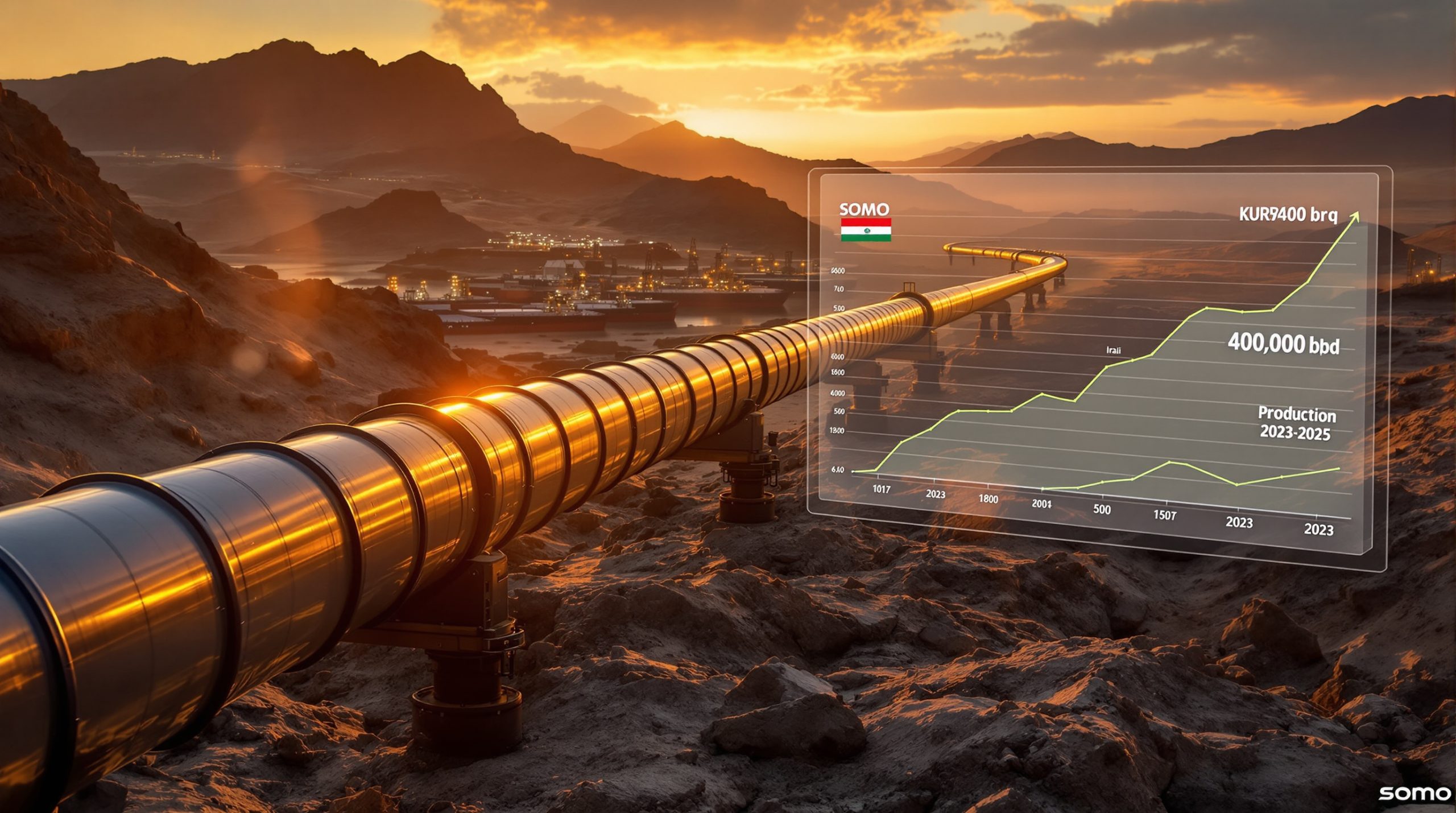What Are SMM Metal Spot Prices?
In the dynamic world of commodities trading, metal spot prices represent the current market value for immediate purchase and delivery of metals. Shanghai Metal Market (SMM) stands as a leading provider of metal price information in the global marketplace, offering comprehensive data across base metals, minor metals, precious metals, and increasingly important materials for new energy applications.
SMM's spot price reporting has become an essential resource for traders, manufacturers, and investors seeking real-time insights into metal market conditions. The platform covers a diverse range of metals including copper, aluminum, zinc, nickel, tin, steel, and rare earths with multiple daily updates to reflect market movements accurately.
Understanding Metal Spot Pricing
Metal spot prices differ significantly from futures contracts, as they reflect the immediate value of physical metal for prompt delivery. These prices serve as crucial benchmarks for contract negotiations, inventory valuation, and procurement planning across industries ranging from construction to electronics manufacturing.
What makes metal spot pricing particularly valuable is its reflection of current supply-demand dynamics rather than speculative future positions. For businesses that require physical metal for manufacturing processes, spot prices provide the most accurate picture of what they can expect to pay when securing necessary materials.
How SMM Determines Metal Prices
SMM employs a rigorous methodology to ensure its price assessments accurately represent real market conditions. The process involves daily sampling across multiple trading hubs through direct market research, trader interviews, and transaction monitoring. This systematic approach helps establish benchmark prices widely used throughout the metals industry.
A key aspect of SMM's methodology is its frequency of updates. The platform provides multiple price intervals throughout the trading day (for example, "Fourth interval 10:45" for Guangdong copper premiums), allowing market participants to track intraday movements with precision. This granularity proves invaluable during periods of heightened volatility.
"SMM collects pricing data through direct market research, trader interviews, and transaction monitoring," notes the organization's methodology documentation, highlighting their commitment to comprehensive market coverage.
SMM's price assessments take into account variations in metal quality, delivery locations, and contract terms, providing a nuanced view of the market that goes beyond simple headline numbers. This attention to detail has established SMM as a trusted authority in metal price reporting.
Why Do Metal Spot Prices Fluctuate?
Metal prices demonstrate significant volatility, sometimes changing dramatically within a single trading session. Understanding the key drivers behind these fluctuations is essential for anyone involved in the metals industry, from miners and refiners to manufacturers and investors.
Supply and Demand Fundamentals
The most basic factor influencing metal prices remains the balance between supply and demand. When demand outpaces available supply, prices typically rise as buyers compete for limited resources. Conversely, when supply exceeds demand, prices tend to fall as sellers compete to move inventory.
Recent market reports from SMM highlight this dynamic in action across different metals:
-
Copper markets are experiencing bearish sentiment, with downstream enterprises in South China "generally hold[ing] a bearish outlook on the future market" according to SMM's July 4, 2025 report. This negative sentiment has contributed to declining spot premiums despite positive copper price prediction from some industry experts.
-
Zinc markets in certain regions like Ningbo show more stability, with SMM noting that "downstream enterprises purchase based on rigid demand; premiums remain basically stable." This indicates a balanced supply-demand situation.
-
Steel markets face potential pressure from "supply increase coupled with seasonal demand weakness," according to SMM's Steel Morning Meeting from July 4, 2025, illustrating how seasonal factors can impact the supply-demand equation.
Production disruptions, whether planned maintenance or unexpected outages, can quickly tighten supply and drive prices higher. Similarly, sudden shifts in industrial activity can alter demand patterns and move markets accordingly.
Macroeconomic Influences
Metals as an asset class respond sensitively to broader economic conditions, making macroeconomic factors significant price drivers. Key influencers include:
-
Interest rates and monetary policy: Higher interest rates increase storage costs for metals and make yield-bearing investments more attractive by comparison, often pressuring metal prices.
-
Inflation trends: Metals frequently serve as inflation hedges, with prices rising during periods of currency devaluation.
-
Currency valuations: As metals are typically priced in US dollars, a stronger dollar generally correlates with lower metal prices as commodities become more expensive for non-dollar buyers.
-
Industrial production metrics: Manufacturing PMI data, construction activity indices, and industrial output figures directly impact metal consumption rates.
The interconnection between these factors creates complex price movements that can sometimes appear counterintuitive without understanding the full macroeconomic picture.
Geopolitical Factors
Trade policies, sanctions, and regional conflicts create market uncertainty and price volatility in metal markets. The potential for disruptions in shipping routes, particularly through critical passages, can dramatically affect global metal supply chains and pricing structures.
A prime example highlighted in SMM's recent coverage involves aluminum markets and potential disruptions in the Middle East. An analysis piece titled "How could a Strait of Hormuz Blockade Disrupt the Global Aluminium Market?" examines the vulnerability of aluminum supply chains to geopolitical tensions in this critical maritime chokepoint.
Such disruptions can affect not just the immediate availability of metals but also shipping costs, insurance premiums, and inventory management strategies, all of which ultimately influence SMM metal spot prices and market trends.
Current Metal Market Trends (July 2025)
The metal markets in mid-2025 present a complex landscape with varying performance across different categories and regions. Understanding these current trends provides valuable context for market participants making strategic decisions.
Base Metals Outlook
Base metals show mixed performance with notable regional variations across China's key trading hubs:
Copper:
- South China markets report declining premiums as "downstream enterprises generally hold a bearish outlook on the future market" according to SMM's July 4, 2025 report.
- North China copper markets similarly demonstrate sluggishness, with SMM noting the "market remains sluggish with similarly unoptimistic consumption weakness expectations."
- Price updates show specific regional variations, with distinct premiums/discounts reported for Guangdong and Shanghai copper at various time intervals throughout the trading day.
Zinc:
- The Ningbo zinc market presents a more stable picture, with SMM reporting that "downstream enterprises purchase based on rigid demand; premiums remain basically stable."
- This stability in zinc contrasts with the bearish sentiment in copper markets, highlighting how different industrial metals can follow divergent paths based on their specific supply-demand dynamics.
Aluminum:
- Supply concerns related to Middle East shipping routes are gaining attention, with SMM featuring analysis on how a potential Strait of Hormuz blockade could disrupt global aluminum markets.
- This geopolitical dimension adds a layer of uncertainty to aluminum pricing forecasts despite relatively stable current market conditions.
Precious Metals Performance
While base metals primarily respond to industrial demand patterns, precious metals analysis shows they follow a different dynamic that balances industrial applications with investment interest:
Gold continues to function as a traditional store of value, with gold prices analysis showing movements often inversely correlated with the strength of the US dollar and real interest rates. Its limited industrial applications mean its price responds more to macroeconomic sentiment than manufacturing demand.
Silver occupies a unique position between industrial metals and precious metals, with significant demand from both manufacturing (particularly electronics and solar panels) and investment sectors. This dual nature can create more complex price patterns than either pure industrial or investment metals.
Platinum group metals derive their value primarily from specialized industrial applications, particularly automotive catalytic converters and other chemical processing equipment. The ongoing transition toward electric vehicles continues to reshape demand patterns for these metals.
New Energy Materials Market
The global energy transition and electrification of transportation continue driving robust demand for specific metals essential to battery production, renewable energy systems, and related technologies:
Lithium markets face questions about price sustainability, with SMM reporting that "Ganfeng says current lithium prices may not be sustainable, costs of multiple projects hard to support" (June 23, 2025). This insight from one of the industry's major producers signals potential challenges in the battery grade lithium supply chain.
Cobalt supply chains are evolving, with the Indonesia Critical Minerals Conference (referenced in SMM's June 21, 2025 coverage) highlighting shifts in global production patterns. Indonesia's growing role in the battery materials supply chain represents a significant development for cobalt and nickel markets.
Rare earth elements continue growing in strategic importance, particularly for high-performance magnets used in electric vehicle motors and wind turbines. The concentration of processing capacity in specific regions makes these markets particularly sensitive to trade policy developments.
How to Track SMM Metal Prices Effectively
Successfully navigating the metals market requires access to reliable, timely price data. SMM offers multiple resources and tools to help market participants track price movements effectively and make informed decisions.
SMM Price Center Resources
SMM provides various platforms for accessing comprehensive metal price data:
- Official website with daily spot price quotes across multiple metals and regions
- Historical price trend subscriptions that allow analysis of longer-term patterns
- Mobile applications enabling real-time price monitoring while on the move
- Regional market reports providing detailed insights into specific trading hubs
The platform's data includes not just headline prices but also premiums, discounts, and detailed market commentaries that provide context for price movements. For example, SMM's July 4, 2025 data shows multiple "interval" updates throughout the day for copper in Shanghai and Guangdong, offering granular visibility into intraday price movements.
For serious market participants, SMM's premium subscriptions provide access to enhanced data sets, historical pricing archives, and specialized reports covering specific metal categories or geographic regions.
Understanding Price Premiums and Discounts
Metal transactions rarely occur exactly at benchmark prices. Instead, physical deals typically involve premiums or discounts that reflect specific circumstances:
-
Geographic location: SMM's data demonstrates how premiums vary between regions such as Shanghai and Guangdong for copper, reflecting local supply-demand balances and logistics costs.
-
Quality specifications: Different grades of the same metal command varying premiums based on purity, physical characteristics, and suitability for specific applications.
-
Delivery timeframes: Shorter delivery windows typically command higher premiums, while longer lead times may trade at discounts to benchmark prices.
-
Contract terms: Volume commitments, payment terms, and other contractual elements influence the final transaction price relative to published benchmarks.
Understanding these premium structures is essential for accurately assessing actual transaction costs. SMM's regional reporting provides valuable insights into how these premiums evolve over time and across different market centers.
Time-Based Price Variations
Metal prices fluctuate throughout trading sessions, with SMM reporting at multiple intervals:
- Morning assessments establish opening trends and often reflect overnight developments in international markets
- Midday reviews capture market momentum as trading volumes typically peak
- Closing assessments reflect final daily positions and serve as important reference points
SMM's methodology includes specific time intervals for updates (such as "Fourth interval 10:45" for Guangdong copper), allowing market participants to track intraday price movements with precision. This temporal granularity proves particularly valuable during periods of heightened volatility when prices can change significantly within a single trading day.
Regional Metal Market Dynamics
The global metals market comprises interconnected regional markets, each with distinct characteristics, pricing structures, and supply-demand dynamics. Understanding these regional variations is essential for effective market analysis and decision-making.
China's Metal Market Influence
As the world's largest metal consumer and producer, China's domestic market conditions significantly impact global prices and iron ore price trends:
-
North China copper markets report sluggish conditions according to SMM's July 4, 2025 data, with the platform noting that the "market remains sluggish with similarly unoptimistic consumption weakness expectations."
-
South China trading hubs show declining premiums for copper, with SMM reporting that "downstream enterprises generally hold a bearish outlook on the future market."
-
Ningbo zinc market demonstrates more stability, with SMM's midday review indicating that "downstream enterprises purchase based on rigid demand; premiums remain basically stable."
These regional variations within China reflect differences in industrial concentration, transportation infrastructure, and local economic conditions. The country's size and diversity mean that treating it as a single market would overlook important regional distinctions that can create trading opportunities.
The significance of China's infrastructure development is underscored by transportation statistics, with SMM's Steel Market Morning News (July 4, 2025) reporting that "national railways delivered 1.641 billion mt of goods from January to May." This massive freight volume highlights the scale of China's industrial activity and its corresponding metal consumption.
Global Market Interconnections
Regional price differentials create arbitrage opportunities and trade flows that help balance global markets:
-
Price disparities between Shanghai and the London Metal Exchange (LME) influence import/export decisions and inventory movements.
-
Regional premium structures reflect logistics costs and local supply-demand balances, creating natural price "zones" for different metals.
-
Import/export dynamics respond to price signals, with metals flowing toward markets offering the most favorable economics.
These interconnections mean that developments in one regional market can quickly impact prices in others. For example, supply disruptions in a major producing region may initially affect local prices but will eventually influence global benchmarks as trade flows adjust to the new reality.
Supply Chain Considerations
Transportation costs, warehouse availability, and delivery timeframes affect regional price structures and can create temporary market distortions:
-
Railway freight volumes (1.641 billion metric tons from January to May) highlight the scale of China's commodity transportation network and its importance to metal market logistics.
-
Port inventories influence local availability and can significantly impact regional premiums during periods of supply tightness.
-
Regional processing capacity affects metal premiums, particularly for refined products that require specialized facilities.
The complexity of modern metal supply chains means that logistical disruptions—whether from weather events, infrastructure limitations, or regulatory changes—can create significant regional price disparities that may persist until transportation networks adjust.
What Factors Will Drive Future Metal Prices?
While current market conditions provide valuable insights, forward-looking analysis requires understanding the factors likely to shape SMM metal spot prices and market trends in the coming months and years. Several key drivers merit particular attention from market participants planning longer-term strategies.
Economic Growth Projections
Industrial production rates, construction activity, and manufacturing output serve as leading indicators for metal demand:
-
Steel market expectations point to potential demand weakness, with SMM's Steel Morning Meeting (July 4, 2025) noting concerns about "supply increase coupled with seasonal demand weakness."
-
Seasonal factors influence consumption patterns across multiple industries, creating predictable demand fluctuations for certain metals.
-
Infrastructure investment trends affect multiple metal categories, with government spending programs often providing significant support for construction-related metals like steel, copper, and aluminum.
The relationship between economic growth and metal consumption varies by material. Base metals typically show high correlation with industrial production indices, while precious metals may follow different patterns based on their investment characteristics and specialized applications.
Energy Transition Acceleration
The continued expansion of renewable energy and electric vehicle production creates specialized metal demand patterns that may diverge from broader economic trends:
-
Battery material requirements are driving demand for lithium, cobalt, and nickel, though SMM reports that "Ganfeng says current lithium prices may not be sustainable, costs of multiple projects hard to support" (June 23, 2025), suggesting potential challenges in the supply-demand balance.
-
Solar industry development supports demand for specific metals and semiconductors, creating growth opportunities even during periods of broader economic slowdown.
-
Energy storage growth creates new consumption patterns for specialized materials as grid-scale and residential storage solutions proliferate.
This structural shift toward electrification represents one of the most significant long-term factors in metal markets, potentially supporting prices for certain materials even during periods of weaker general economic activity.
Technological Developments
Manufacturing innovations and material substitution possibilities influence long-term metal demand patterns:
-
Recycling advancements affect primary metal requirements, with improving recovery rates potentially moderating demand growth for virgin materials.
-
Miniaturization trends in electronics and other industries continue reducing per-unit metal content, partially offsetting the effect of growing unit sales.
-
New applications create demand for previously niche metals, as demonstrated by the growing importance of rare earth elements in various high-technology products.
The pace of technological change makes long-term demand forecasting particularly challenging, as innovations can either increase or decrease metal intensity across various applications. This uncertainty creates both risks and opportunities for market participants with longer investment horizons.
Ready to Stay Ahead of Major Mineral Discoveries?
Discover why historic mineral finds can generate exceptional returns by exploring Discovery Alert's dedicated discoveries page, where our proprietary Discovery IQ model delivers real-time ASX mineral discovery alerts, giving you the market-leading edge before the crowd.




